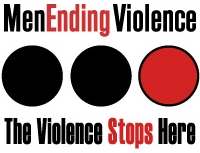Violence in the home has long been protected—not by secrecy alone, but by law, culture, and institutional design. The division between public and private life is not a neutral boundary. It is a deeply embedded structure rooted in centuries of legal and social norms that treated women as dependents, subordinates, and property. In British Columbia today, women are not simply being harmed in their homes; they are being abandoned by institutions never meant to protect them.
The Scale of Intimate Partner Violence in BC
Nearly half—48 percent—of girls and women aged 15 and over in BC have experienced intimate partner violence. That’s more than 1.1 million lives. Right now, we estimate that at least 92,000 women are living with physical or sexual violence from a partner. If coercive control, emotional abuse, and economic violence are included, the number exceeds 200,000. These are not signs of a failing system. They are signs of a system working exactly as it was designed—to preserve domestic order and male authority, not women’s survival.
A Legal Legacy of Control and Silence
Under English common law and its colonial inheritors, women were not legal persons in their own right. They were legally absorbed into the identities of their fathers and husbands. Marriage conferred control over a woman’s body, property, movement, and legal status. Violence within that context was not just permitted—it was structured as a right. That legal legacy is not a relic. It continues to shape institutional responses today.
When violence happens in public, it is treated as a criminal matter. When it happens at home, it is often minimized as a dispute. This logic—framing the household as a realm beyond state interference—has long shielded power of fathers, husbands and boyfriends from accountability. That logic still governs.
Systemic Neglect and Political Inaction
Government policy continues to assign intimate partner violence to health or social services, rather than addressing it as a public safety emergency. Despite the scale—1.1 million women affected—there is no provincial GBV framework, no declaration of emergency, and no mandatory risk assessments across institutions. The message is clear: violence in the home is a personal problem, not a collective responsibility.
Police routinely downplay reports of IPV as “relationship issues” or “high-conflict relationship.” The credibility of victims and survivors who report violence is questioned. Many of the 92,000 women currently experiencing violence never see timely or meaningful intervention. In court, Crown counsel and judges often rely on outdated assumptions. The myth of the good father frequently outweighs the survivor’s risk.
This divide is not just institutional—it is cultural. Families, coworkers, and communities hesitate to ask, support, or believe unless the harm is visible. That silence leaves more than 200,000 women navigating abuse on their own.
Lives Lost, Systems Maintained
This July, five women in British Columbia were killed by men they knew. These were not anomalies. They were the lethal outcome of institutional delay and political silence.
One of them was Bailey McCourt. On July 4, she was beaten to death with a hammer by her former partner. He had been convicted of assaulting her—of choking and threatening her life. Yet he was released pending sentencing. This was not an oversight. It was a calculated decision made within a legal system that continues to treat the violence by a husband or boyfriend in the home as less urgent than disorder in the public square. It reflects a framework that centres male entitlement over women’s safety.
Bailey McCourt didn’t die because the system failed. She died because it operated exactly as designed—passing responsibility from police to Crown, from Crown to courts, until her danger was no longer seen as urgent, or even real.
To stop these deaths, we must dismantle both the systems that permit them and the ideology that excuses them—an ideology that still treats men’s dominance as natural and the harm women experience as an acceptable loss.




